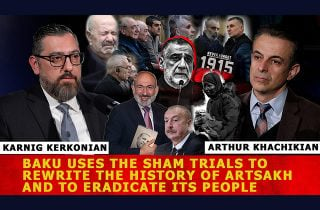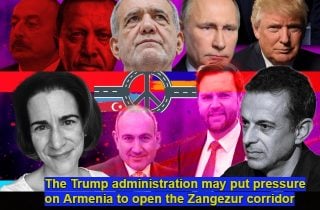
The atrocities against Armenians were committed solely based on ethnic identity and aimed at their displacement and extermination. Arman Tatoyan

These days mark the 37th anniversary of the mass massacres of Armenians in the Azerbaijani city of Sumgait on February 27–29, 1988.
1. The Sumgait atrocities began on the evening of February 26, 1988, immediately accompanied by murders, burning Armenians alive, maiming them, and destroying their homes and personal belongings.
2. These acts initiated and continued the brutalities against Armenians in Ganja (Kirovabad), Baku, Maragha, Shahumyan, and more than 320 other Armenian-populated cities and villages.
In 1988, the city of Ganja alone had a population of 45,000 Armenians.
3. In all these locations, Armenian civilians were brutally murdered, including children, women, and the elderly, who were tortured, killed in agony, and whose bodies were desecrated.
Thousands of Armenians were forcibly displaced from their permanent residences. Their homes and personal belongings were destroyed.
4. Just two examples:
From April 29 to mid-August 1991, Azerbaijan’s special police forces (OMON) carried out the “Operation Ring,” resulting in the forced deportation of Armenians from the Khanlar, Shahumyan, Hadrut, Shamkhor, Gazakh, and Getabek regions.
On April 10, 1992, Azerbaijani armed units carried out a ruthless massacre of Armenian civilians in the village of Maragha in the Martakert region, where 57 people were killed—most of them women, children, and the elderly. They were beaten, humiliated, raped, mutilated, and burned both alive and after death.
5. The atrocities against Armenians were committed solely based on ethnic identity and aimed at their displacement and extermination.
6. Evidence confirms that in the following years, the state policy of Armenophobia and incitement of hatred against Armenians evolved further. The killing and torture of Armenians were openly encouraged by Azerbaijan’s highest authorities. This continues today in new forms.
7. A concrete example of this was the brutal axe murder of Armenian officer Gurgen Margaryan in February 2004 during an international training course in Budapest. Azerbaijani army officer Ramil Safarov killed Margaryan in his hotel room while he was asleep. Later extradited to Azerbaijan, Safarov was not only released but also glorified at the highest levels.
8. In the case of “Makuchyan and Minasyan v. Azerbaijan and Hungary” (application no. 17247/13), the European Court of Human Rights ruled in 2020 that Azerbaijan’s pardon, granting of privileges, and glorification of Ramil Safarov at the highest state level were ethnically motivated. The court cited statements by high-ranking Azerbaijani officials expressing support for his actions.
9. The same ethnically motivated atrocities were recorded during Azerbaijan’s wars against Armenia and Artsakh in April 2016, September–November 2020, and during its attacks in November 2021 and September 2022, September 19-20, 2023. Azerbaijani armed forces and terrorist groups they employed filmed and cynically displayed acts of mutilation, such as cutting off Armenian ears or desecrating bodies, confident in their impunity, ethically motivated massive forced displacements.
10. Before and alongside these wars, the promotion of Armenophobia and the encouragement of anti-Armenian violence intensified. Objective reports based on evidence confirm this.
11. Unfortunately, the grossly disproportionate response of the international community, especially international organizations mandated to protect human rights, and in many cases, their silence, have only contributed to the deepening of racis policies against Armenians and their increasingly brutal manifestations.
12. We pay tribute to the innocent victims of the Sumgait massacres and the Armenian massacres in other settlements. I especially emphasize that impunity for violations and crimes, as well as the absence of a struggle for one’s rights, leads to new, more severe violations and even more brutal crimes.
Arman Tatoyan























